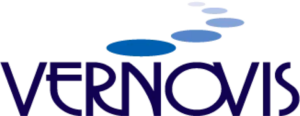As the U.S. workforce ages, businesses and organizations face the dual challenge of managing an increasing number of retirements while also adapting to a demographic that is working longer and aging in place. This evolving landscape significantly affects the job market, creating opportunities and obstacles that organizations must navigate to stay competitive and effective.
In this blog, we look at how the aging workforce impacts the job market and offer strategic advice for companies looking to navigate this demographic shift effectively.
The Dual Challenge of the Aging Workforce
The U.S. job market is experiencing a remarkable shift, primarily driven by the aging Baby Boomer generation and a corresponding rise in the median age of workers. On the one hand, an estimated 100,000 workers retire each month, contributing to a tightening labor market and intensifying the competition for skilled workers. On the other, an increasing number of employees are choosing to stay in the workforce longer, either out of preference or necessity, leading to an older average workforce age.
This trend poses a unique set of challenges for companies. The departure of seasoned employees threatens to leave skill gaps and a loss of institutional knowledge. At the same time, the increased presence of older workers necessitates adjustments in workplace policies, benefits, and accommodations to meet their distinct needs.
Some of the challenges arising from the aging U.S. workforce include:
Skill Gaps and Knowledge Loss
One of the most immediate impacts of the aging workforce is the widening skill gap. Industries dominated by older workers, such as healthcare, education, and manufacturing, are particularly strained as decades of accumulated expertise and institutional knowledge exit the workforce. The loss of seasoned workers is not merely a quantitative issue but a qualitative one, affecting productivity, innovation, and operational continuity.
Shifts in Labor Force Participation
The labor force’s age composition is shifting, with older workers making up an increasing share. In 2023, nearly one in five Americans aged 65 and older were employed or actively seeking work. This trend is expected to continue, with projections indicating that older adults’ labor force participation rate will rise. In contrast, the number of people aged 75 and older in the workforce is expected to grow by 96.5% by 2030.
Changing Workplace Expectations
The presence of older workers is also transforming workplace expectations and norms. Today’s older employees are more likely to have a four-year college degree than their predecessors and to work more hours. Their aspirations, work-life balance preferences, and health and wellness needs necessitate reevaluating workplace policies and benefits.
Navigating the Demographic Shift: Strategies for Companies
Companies must adopt proactive and innovative strategies to address the challenges an aging workforce poses. Here are several approaches to help businesses remain competitive and thrive in a changing labor market.
- Embrace Lifelong Learning. The rapid pace of technological advancement necessitates continuous learning and upskilling. Companies should invest in training programs accessible to employees of all ages, ensuring that the workforce remains adaptable and capable of meeting evolving industry demands.
- Enhance Recruitment Strategies and Retention Efforts. Attracting and retaining younger talent is crucial for filling the gaps left by retiring Baby Boomers. Companies should leverage modern recruitment solutions channels, offer competitive benefits, and foster a corporate culture that values diversity and inclusion to attract younger workers.
- Implement Effective Succession Planning. Succession planning is vital for minimizing the disruption caused by retirements. By identifying potential leadership gaps and nurturing internal talent, companies can ensure a seamless transition and safeguard their future leadership pipeline.
- Foster an Inclusive Multigenerational Workplace. Creating an environment that promotes intergenerational collaboration and knowledge sharing can mitigate the impact of retirements. Mentorship programs, in particular, can facilitate the transfer of invaluable insights and skills from older to younger employees.
- Offer Flexible Work Arrangements. Flexible working options, such as telecommuting, part-time roles, and phased retirement plans, can help retain older workers who might otherwise leave the workforce. Such arrangements allow companies to benefit from the expertise of seasoned professionals while accommodating their preferences for work-life balance.
- Prioritize Health and Wellness Programs. Comprehensive health and wellness programs catering to an aging workforce’s needs can improve employee well-being, reduce absenteeism, and enhance productivity. Programs should address physical health, mental health, and financial well-being.
- Leverage Technology to Bridge Gaps. Adopting technology to automate routine tasks can alleviate the physical demands on older workers and increase operational efficiency. Additionally, technology can facilitate remote work, expand training opportunities, and enhance workplace accessibility.
An Aging Workforce – Final Thoughts
The aging U.S. workforce presents both challenges and opportunities for the job market. Companies can navigate the challenges by understanding the implications of this demographic trend and implementing strategic responses. Embracing lifelong learning, enhancing recruitment and retention, fostering an inclusive workplace, and leveraging technology are vital strategies that can help businesses adapt to the changing landscape. As the workforce continues to evolve, companies that are proactive and agile in their approach will not only survive but thrive, turning the phenomenon of an aging workforce into a competitive advantage.
Hire the Talent You Need with Vernovis
Need help combating a skills shortage or filling key roles in a competitive job market? Vernovis specialized in hard-to-fill positions in the technology, cybersecurity, finance, and accounting functions across the Midwest. We can offer flexible engagement models and a consultive approach to providing talent to meet your needs and ensure you achieve your business objectives. Our comprehensive approach includes four models– staff augmentation, contract-to-hire, direct hire, and outsourcing- ensuring your businesses can tap into the right mix of expertise and experience when they need it most. Reach out to learn more about our services today.




